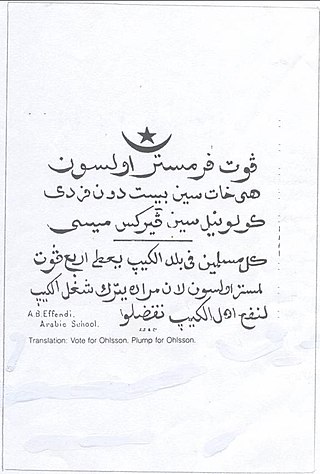Top Qs
Timeline
Chat
Perspective
Ve (Arabic letter)
Additional letter used in the Perso-Arabic script From Wikipedia, the free encyclopedia
Remove ads
Ve (ڤ) is a letter of the Arabic-based Comoro, Kurdish, Luri, Swahili, and Wakhi alphabets. It is derived from the Arabic letter fāʾ (ف) with two additional dots. It represents the sound /v/ in the aforementioned uses. On the other hand, the letter Pa (ڤ) represents the sound /p/ in the Jawi (used for Malay) and Pegon (used for Javanese) alphabets.
This article relies largely or entirely on a single source. (July 2024) |


Ve originated as one of the new letters added for the Perso-Arabic alphabet to write New Persian, and it was used for the sound /β/. This letter is no longer used in Persian, as the [β]-sound changed to [b], e.g. archaic زڤان /zaβɑn/ > زبان /zæbɒn/ 'language'[1]
The letter ve is sometimes used in Arabic language to write names and loanwords with the phoneme /v/, such as ڤولڤو (Volvo), ڤيتنام (Vietnam), نوڤمبر (November) and ڤيينا viyenna (Vienna), but rather described, for example, in Egyptian Arabic, it is called fe be talat noʾaṭ (فه بتلات نقط, "Fa' with three dots").
The character ڤ is mapped in Unicode under position U+06A4.
The character ڥ is mapped in Unicode under position U+06A5. In Tunisia and Algeria the variant (ڥ) /v/ with three dots below is used instead to differentiate it from the letter (ڨ) /ɡ/. This usage might have been influenced by the Maghrebi archaic variant of fāʼ (ڢ) with a dot below.
Remove ads
ڨ


In Tunisian and in Algerian, (ڨ, looks similar to ق but with three dots) is used for /ɡ/, such as in names of places or persons containing a voiced velar stop, as in Gafsa (in Tunisia) or Guelma (in Algeria). If the usage of that letter is not possible for technical restrictions, qāf (ق) is often used instead.
In Arabic script representations of the Chechen language, ڨ is used to represent the uvular ejective /qʼ/, and /v/ in Hindko language, in Pakistan, called vaf.
Remove ads
See also
References
Wikiwand - on
Seamless Wikipedia browsing. On steroids.
Remove ads
